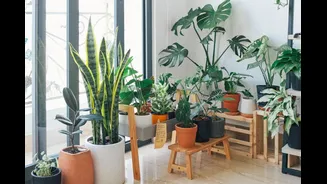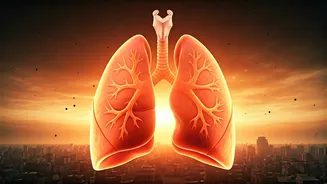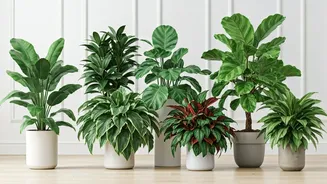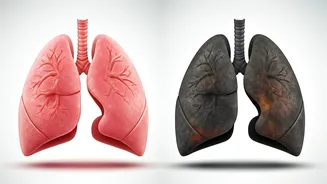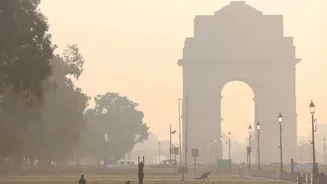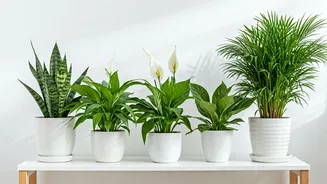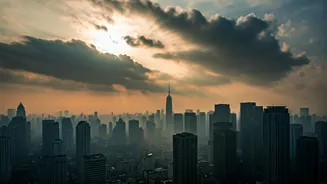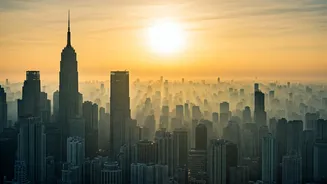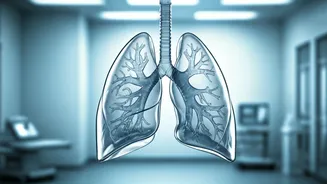When winter settles in, most people instinctively shut windows, seal doors, and stay indoors to escape the smog outside. The air on the street looks visibly dirty. Your living room looks calm. But appearances
mislead more than they reveal.
Across multiple studies worldwide, researchers keep arriving at the same uncomfortable finding: in winter, indoor air can be as polluted as the air outside, and in many homes, even worse. This happens quietly, without the dramatic haze we recognise outdoors. The danger builds invisibly.
What Exactly Makes Indoor Air Polluted
Indoor air pollution is not a single pollutant but a mixture of fine particles, gases, fumes, chemicals, and microorganisms. Outdoor pollution seeps in through cracks and open doors. Cooking on gas or biomass adds smoke. Incense, dhoop, candles, mosquito coils, and cigarettes release fine particles and harmful gases.
Everyday items like paints, cleaning sprays, adhesives, and room fresheners emit volatile organic compounds. Dust, pet hair, mould spores, and bacteria circulate in stagnant air. Indoors, all of this accumulates faster, especially when winter ventilation is limited.
Why Winter Traps Pollutants Inside Homes
Cold weather makes people seal their homes. Windows stay shut to keep warm air in. Heaters, cooking sessions, long showers, and increased indoor activity add more emissions.
Warm indoor air rises and draws outdoor air in from gaps below, creating a stack effect that quietly sucks polluted air indoors while stopping it from escaping. Without cross breeze or sunlight, fine particles remain suspended for long periods, creating a trapped layer of bad air you barely notice.
Expert Insight From Kochi
Dr Anupa Nair, a respiratory specialist at a Kochi based hospital, says winter indoor pollution is consistently underestimated. According to him, people assume coastal cities with better outdoor air are automatically safe indoors, but the opposite often happens.
He explains that once homes are closed for long hours, pollutants collect rapidly. He adds that in many Kochi households, incense, fish frying, mosquito coils, and damp corners create a heavy indoor mix, especially in flats with limited ventilation. His warning is simple. Indoor air may look harmless, but winter makes it deceptively toxic.
How Indian Homes Become Smog Chambers
In Indian cities, winter already brings sharp outdoor pollution spikes. What many forget is that indoor spaces pick this up and hold on to it. Research in Delhi households shows that indoor PM2.5 levels during winter frequently match or exceed outdoor levels.
In homes with closed windows and heavy evening cooking, indoor concentrations can remain high for hours. Biological contaminants also rise. Reduced sunlight, persistent moisture, and poor ventilation allow bacteria and fungal spores to multiply indoors, especially in ground floor flats, older buildings, or coastal homes.
Not Just Lower Income Homes Are at Risk
Indoor pollution is not exclusive to households using wood or biomass. Even modern apartments face serious indoor exposure. Studies from other countries show that gas stoves can release nitrogen dioxide at levels comparable to busy roads.
Everyday tasks like frying, heating water, cleaning with spray chemicals, and burning scented candles can raise indoor particulate concentrations far above recommended limits. The notion that middle class or premium homes have cleaner indoor air is simply not supported by evidence.
What Poor Indoor Air Does to the Body
The health effects of indoor air pollution mirror those of outdoor smog. Long term exposure increases the risk of heart disease, stroke, respiratory illness, lung cancer, and chronic lung disease. Children face greater danger because their lungs are still developing and they breathe more rapidly.
Indoor pollution has been linked to increased asthma cases, infections, sleep disturbances, and possible cognitive impacts in children. Adults often underestimate the harm because indoor pollution rarely causes immediate irritation.
Why It Gets Worse During Winter
Winter intensifies indoor exposure because people spend long hours inside. Cooking and evening routines spike indoor pollution. Weekends show even higher concentrations as families stay indoors longer.
In closed rooms, moisture accumulates, and pollutants linger. Without controlled ventilation, fine particles from daily activities stay in the air long after they are produced, increasing overall exposure.
What You Can Do Without Major Expense
Cleaner indoor air relies on simple habits. Short ventilation bursts during windows of lower outdoor pollution help flush out trapped particles. Cross ventilation for a few minutes after cooking or cleaning makes a measurable difference.
Using functioning exhaust fans, cooking with lids, reducing incense or coil use, and keeping chemical products away from living spaces all contribute. Air purifiers can help, but only when combined with real ventilation and reduced sources of pollution.
Rethinking How We View Indoor Air
Winter smog is often seen as an outdoor enemy. But the air you breathe indoors does not magically become clean when the windows close. Polluted outdoor air sneaks in. Indoor activities add more. Together, they create a slow-moving threat you rarely see. Once we understand that indoor air is part of the same ecosystem as the city outside, the shift in habits becomes easier.
A closed room can keep out the cold. It cannot keep out the pollution unless you make deliberate choices to let the bad air out and stop adding more.
